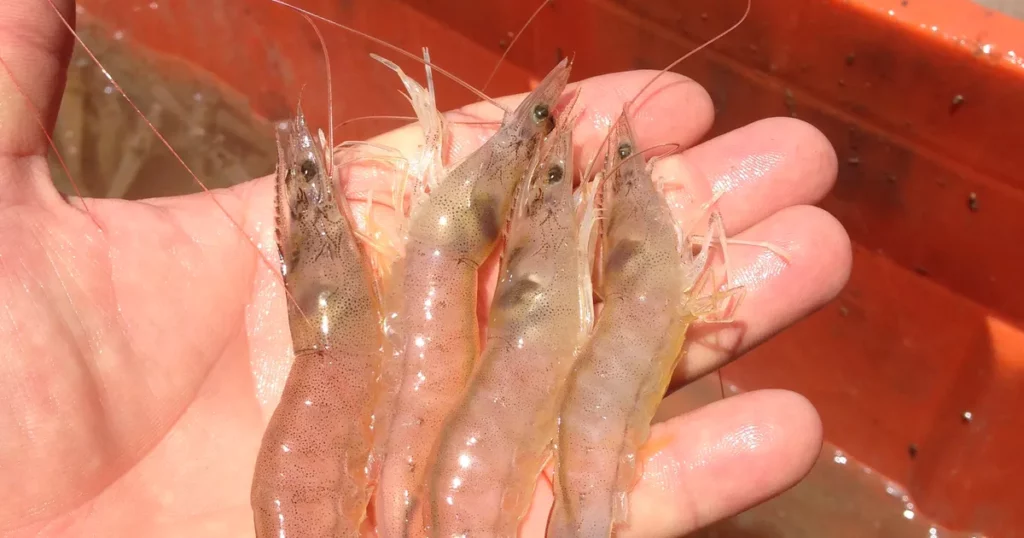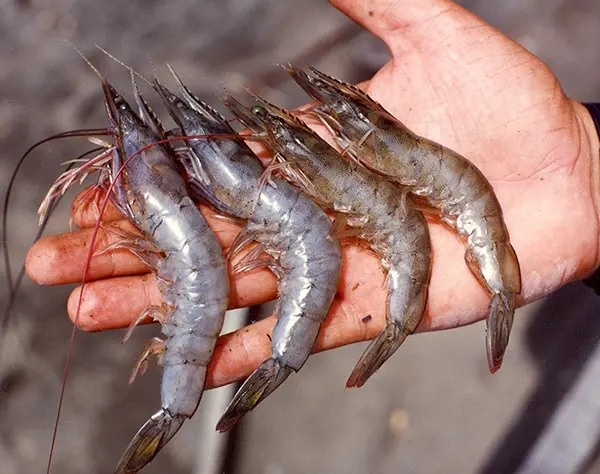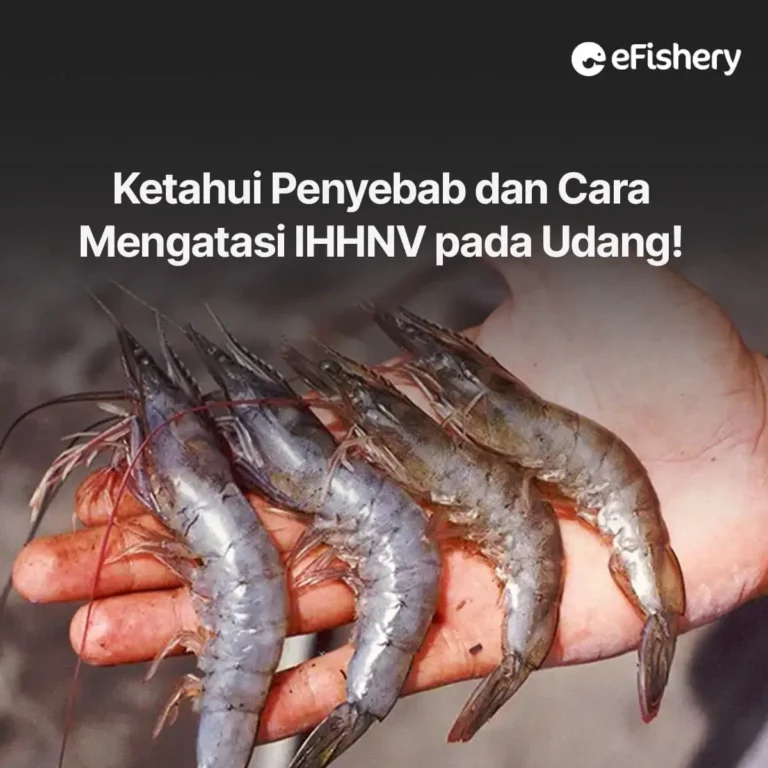Artikel Ini Telah Direview Oleh:

Laksono Radityo
Praktisi Budidaya Udang
Hello Mr/Ms Shooters! Have you ever heard of Infectious Hypodermal and Hematopoietic Necrosis Virus or IHHNV on shrimp? IHHNV is a disease in shrimp that can increase cannibalism and mass mortality in several growth phases of shrimp. Pretty dangerous and detrimental, right? Come on, find out what IHHNV is and how to prevent it in shrimp in this article!
What is IHHNV?
IHHNV is a contagious virus that can slow growth and increase the size gap of shrimp in ponds which can lead to cannibalism. IHHNV is also known as an infection Penaeus stylirostris densovirus which is widespread in wild penaeid shrimp species in America and Asia. IHHNV was first detected in Hawaii in 1981. In 1987, the presence of IHHNV was confirmed in the southern Gulf of California, Mexico. After that, IHHNV spread quickly to various countries in the world, one of which is Indonesia.
IHHNV is the smallest of all shrimp viruses, with a single-stranded DNA genome and approximately 22 nm in diameter. One of the most common causes of this disease is a decrease in water quality that exceeds the optimum range (ammonia > 1 mg/L, nitrite > 1 mg/L, ORP > – 100 mV, pH fluctuation, DO < 4 mg/L, TOM > 80 ppm, low alkalinity). When this happens, the shrimp will be stressed and their immune system will decrease, so that the shrimp will be susceptible to viruses. Excessive feeding can also be a trigger for IHHNV because the remaining feed in the pond can increase toxic compounds that can attack shrimp. In addition to the two things mentioned earlier, poor pond biosecurity can also lead to IHHNV for shrimp. Ponds that do not go through the biosecurity stage will become less sterile and grow disease-carrying pathogens.

IHHNV is a dangerous disease because it can make the growth and weight of shrimp unstable and inhibit the formation of hard shells. Shrimp that have been infected with IHHNV will swim to the surface of the water, remain motionless, then sink to the bottom of the pond. This disease also causes the shrimp growth rate to be slow with an abnormal body shape and tend to be stunted.
IHHNV infection can cause cumulative mortality of up to 90 percent in post larvae and juvenile shrimp. However, mortality due to IHHNV is rare in infected adult shrimp. The main target organs for IHHNV infection are gills, cuticular epithelium, all connective tissue, hematopoietic tissue, lymphoid organs, antennal glands, ventral nerve cords, and ganglia.
Symptoms of IHHNV Disease
Before the impact of IHHNV disease gets worse on shrimp, it's a good idea for you to know some of the symptoms so you can start treatment immediately. The following are symptoms of IHHNV disease in shrimp:
- The appearance of a necrotic white area in certain areas that extends to the muscles, especially on the edge of the ventral side and caudal fin. Over time, this condition can cause necrosis (injury resulting in premature death of living cells and tissue) and redness in some shrimp.
- The rostrum is crooked and the 6th abdominal segment is small.
- There is a network failure intranuclear inclusions in gill cells and infections in epithelial cells under the skin, haematopoietic organs, antennal glands, gonads, lymphoid organs, nerves, and connective tissue.
If there are shrimp in your pond with indications of IHHNV disease, you need to be aware of their transmission. IHHNV transmission can occur through horizontal or vertical routes. Horizontal transmission occurs through cannibalism or contaminated water, while vertical transmission occurs through infected eggs. IHHNV has been detected at all life stages of shrimp (eggs, larvae, postlarvae [PL], juveniles and adults).
How to Prevent and Control IHHNV

IHHNV is a disease that is quite dangerous because shrimp infected with this virus will experience a decrease in appetite, cannibalism, and mass death. If you have seen the symptoms of IHHNV, you must be vigilant because there is no effective vaccine for this disease. However, IHHNV can be prevented and controlled in the following ways:
- Choosing shrimp fry that has been certified because shrimp fry that are of poor quality can trigger IHHNV disease.
- Maintain pond water quality at the optimum range so that shrimp are not stimulated to become infected with IHHNV. In this case, you can do:
- The addition of probiotics to degrade organic waste and improve water quality.
- Siphoning regularly so that the pond bottom is always in optimal condition.
- Checking the water quality regularly so that action can be taken immediately if the water quality is not in the optimum range.
- Adding vitamins and immunostimulants to boost the immune system so that shrimp avoid vibriosis. For this, you can use the product Aqua C Fish Plus And Coforta A. Dose Aqua C Fish Plus The recommended amount is 2-3 grams/kg of feed. As for usage Coforta A, the dose needed is 3 grams/kg of feed every day treatments (1 hour feed). The IHHNV outbreak was triggered by stressor, so product Coforta A very suitable for use because it can reduce stress on shrimp significantly.
- Improve feed management to prevent overfeeding and decreasing water quality.
- Disposing of infected and dead shrimp is one way to deal with shrimp infected with IHHNV and prevent its transmission.
- Do not use antibiotics and other dangerous chemical compounds.
Konsultasikan Cara Pengendalian IHHNV Lebih Lanjut di eFarm!
Need Help Regarding Shrimp Cultivation Business?
Fill in your personal data in the following form. Our team will immediately contact you via the number cellphone attached. Make sure the data entered is correct.
IHHNV in shrimp is not a disease that can be cured through vaccination. However, you can still prevent and control its spread in ponds if the disease can be detected early.
To find out more about how to prevent and control IHHNV, you can first consult with a shrimp farming expert eFishery for free through features Cultivation Consultation in app eFarm. Apart from being able to consult directly with shrimp farming experts in the application eFarm, You can also use other features to find more information and buy products that support shrimp farming.
Fill out the form below to consult at Cultivation Consultation!

Laksono Radityo - Praktisi Budidaya Udang
Berpengalaman sebagai asisten riset perikanan dan teknisi tambak udang. Saat ini aktif sebagai Technical Support Online di eFishery
- https://core.ac.uk/download/pdf/8434664.pdf
- https://pubmed.ncbi.nlm.nih.gov/16473428/
- https://thefishsite.com/disease-guide/infectious-hypodermal-and-haematopoietic-necrosis-ihhn
- https://www.int-res.com/articles/dao/14/d014p219.pdf
- https://www.oie.int/fileadmin/Home/eng/Health_standards/aahm/current/chapitre_ihhn.pdf
- https://www.researchgate.net/publication/337096940_Classical_Runt_Deformity_Syndrome_Cases_in_Farmed_Penaeus_vannamei_Along_the_East_Coast_of_India
